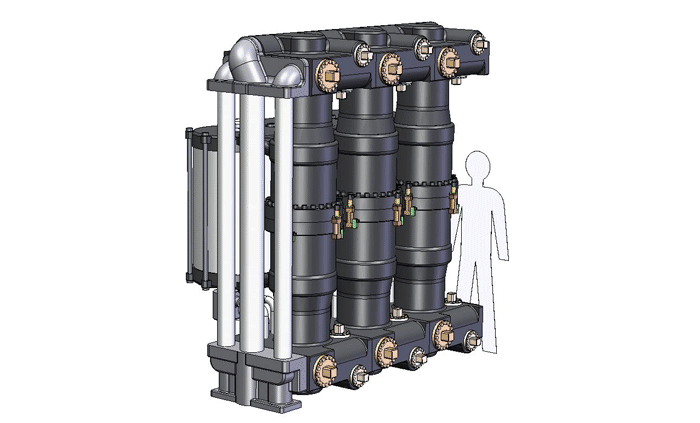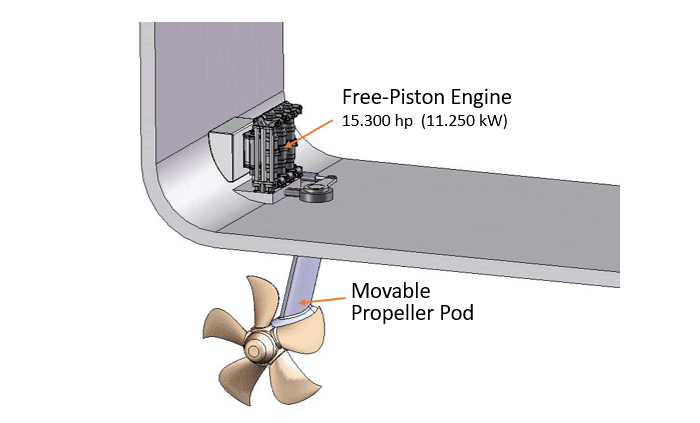The new hydrostatic propulsion system for ships significantly improves the maneuverability, emissions, space and costs. The small size and hydrostatic transmission of power simplifies the structure of the hull and increases the hold of the ship noticeably.
3-Cylinder Free-Piston Engine

Propulsion Concept

| Ship, width |
90 ft. |
27 m |
|
|
| Engine |
3 Cylinder, 2-Stroke Diesel, |
Free-Pistons |
Hydraulic Axial-Piston Motor |
|
| Power |
15,300 hp |
11.250 kW |
15,300 hp |
11,250 kW |
| L x W x H |
106”x 63”x 114” |
270 x 160 x 290 cm |
ø42”x 47” |
ø106 x 120 cm |
| Weight |
16 to |
16 to |
3.6 to |
3.6 to |
| Displacement |
3 x 6,100 cu.in |
3 x 100 Liter |
350 cu.in. |
5,700 cm³ |
| Speed |
500 rpm (26.2 ft./sec.) |
(8 m/sec.) |
1,050 rpm |
(7:1) |
| Pressure (BMEP) |
650 psi |
45 bar |
4,640 psi |
320 bar. |
The propulsion unit consists of a multiple-cylinder Hydraulic Free-Piston Engine (HFPE) driving the propeller of the adjustable pod with a hydraulic axial-piston-motor. The small size and weight of the engine and flexible transmission of power allows placing the unit at any section of the hull. The propeller pod consists of an adjustable axial-piston motor and a planetary gear stage driving the propeller. The pod can be rotated around one or two axes to determine the direction of the thrust. A complex, thrust reducing rudder is not required and the efficiency, maneuverability and stopping distance (thrust reversal) are greatly improved. The undulation can be reduced noticeably.
The 3-cylinder HFPE consists of ‘stackable’ single-cylinder units with opposed pistons for very high efficiency and nearly vibration-free operation. The exhaust gas driven piston of the Piston Impulse Charger & Compounder (PICC) provides high charge air pressure and additional hydraulic energy to increase the propulsion efficiency. Multiple peripheral fuel injector units inject highly pressurized fuel (3.500 bar / 50,760 psi.) from the cylinder wall into the combustion chamber, increasing the atomization and distribution of fuel for higher efficiency and a significant reduction of CO₂, NOx and soot.
Copyright Valentin Technologies